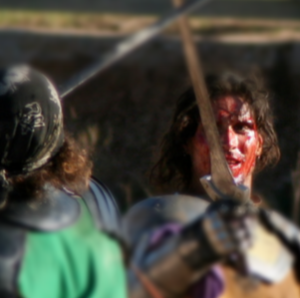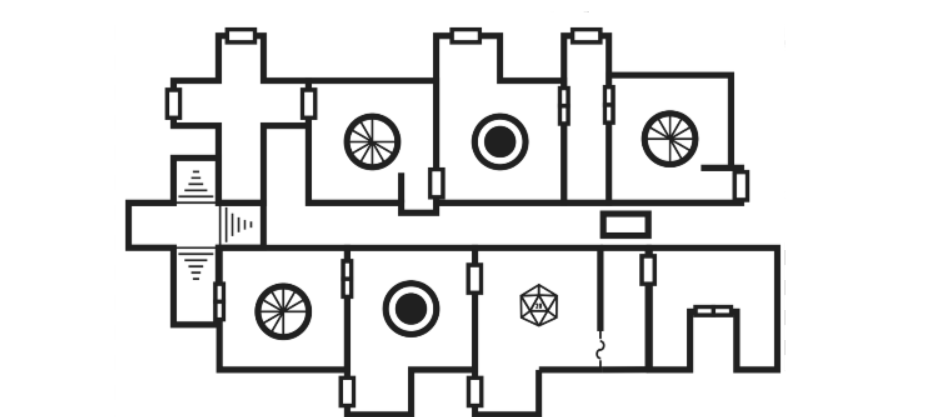 Playing rpgs over the years I’ve always been interested in finding ways to speed up combat encounters. For many rpgs the primary way to gain experience is to fight things, as a result, combat sessions are necessary to move the campaign along.
Playing rpgs over the years I’ve always been interested in finding ways to speed up combat encounters. For many rpgs the primary way to gain experience is to fight things, as a result, combat sessions are necessary to move the campaign along.
There are many ways to make the tasks involved during combat more efficient so players can focus more on role playing. As opposed to wasting valuable time flipping through player manuals, rolling dice and crunching numbers.
Below are 7 ways to speed up combat encounters:
1. Remove distractions
If you know combat is coming up keep the battlefield clear. This seems like a simple one but I can’t tell you how many times I’ve had to help clear plates of chips, dip and drinks from the battlefield each time combat starts only to have it put back again afterwards. As a general rule I like to keep food, cellphones and items unrelated to the game off the main playing area. If you find players are distracted by their phones when their turn comes around set a no cell phone rule at the table.
2. Familiarize yourself with combat abilities
This applies to both the gm and players. To speed up combat encounters, know the rules that will most likely come into play during combat. If you’re the gm, know the combat rules for the most common types of attacks your players and monsters will want to use. If you’re a player, familiarize yourself with what weapons, spells, special abilities and dice you will be attacking with. Write down your top three preferred attack methods on your character sheet and familiarize yourself with them – including magic attacks.The last thing a player that decides to grapple a bad guy wants to hear from the gm is “Grapple? Really? Ugh…you’re going to make me look up grappling rules?” The last thing a gm unprepared for grapple wants to hear is “I want to grapple the bad buy”
3. Note special attack considerations
Adding a column for special attack considerations to your character sheet is something that can help speed up combat encounters, especially with D&D. Barbarian? Make sure to include a column for your rage damage bonus so you don’t forget to include it while you’re raging. If you’re a rogue write down your sneak attack damage in that column. Magic users would write down their most common offensive spells. If you’re a paladin write down your preferred smite as an attack.
4. Premade combat maps
Waiting for a map to be drawn out by the gm so combat can start is a huge time suck. Gms should have a stock of premade combat maps along with related monster tokens and miniatures ready.
5. Bring out only the dice you need
Many players and gms have a pile of dice they bring to each game. Wading through a mound of dice each time combat occurs is a unnecessary waste of time. When starting combat, only pull out the dice you’ll need for combat and put the rest away. If you have to borrow dice from other players to complete certain attacks, consider buying more dice so you’re not passing dice back and forth each turn. Magic missile a lot? Buy extra d4s. Fireball like a crazy person buy a crap ton of d6s.
6. Roll attack and damage dice at the same time
The single best way I’ve found to speed up combat encounters is to encourage players (yes this includes the gm) to roll their attack and damage dice at the same time. On a miss, simply disregard the damage. On a hit, the damage dice are sitting there waiting to be added up. For characters with two attacks, have them roll different colored dice for each attack and predetermine which color will be first.
7. Streamline initiative
There are many different techniques to reduce the time it takes rolling and or keeping track of initiative. Below are just a few ways to speed up combat encounters by streamlining initiative:
- Group initiative -Group initiative is helpful if you have many opponents. You reduce the time it takes to determine initiative by taking the highest roll on either side and then having each side take turns attacking.
- Initiative cards – Initiative cards do take a bit more prep work up front by the gm, however once they are set up, they are a great way to keep combat flow moving smoothly. Once everyone rolls initiative, simply put the cards in order of initiative. You can also track hit points and conditions on the cards leaving less to mentally keep track of. Digital Changeling has a nice post about Initiative Cards that goes over how they can be used, in addition to PC and monster card template examples. The templates are for D&D 4th edition but are easy enough to tweak for other editions.
- Toss initiative out the window – Yes, really, one option is to not roll initiative. Instead, have the players sit around the table in order of their initiative based on their initiative modifier. Or just have everyone roll initiative and then go clockwise, letting the player with the highest initiative go first. The gm would need to keep track of where the monsters’ initiative modifiers would fit in.
Above are a few examples of how making a few small changes around the table can speed up combat encounters. The examples provided above focus mostly on out of game ways to make combat encounters more efficient. There are plenty of in game hacks that speed up combat and I’ll address that in a future post.
